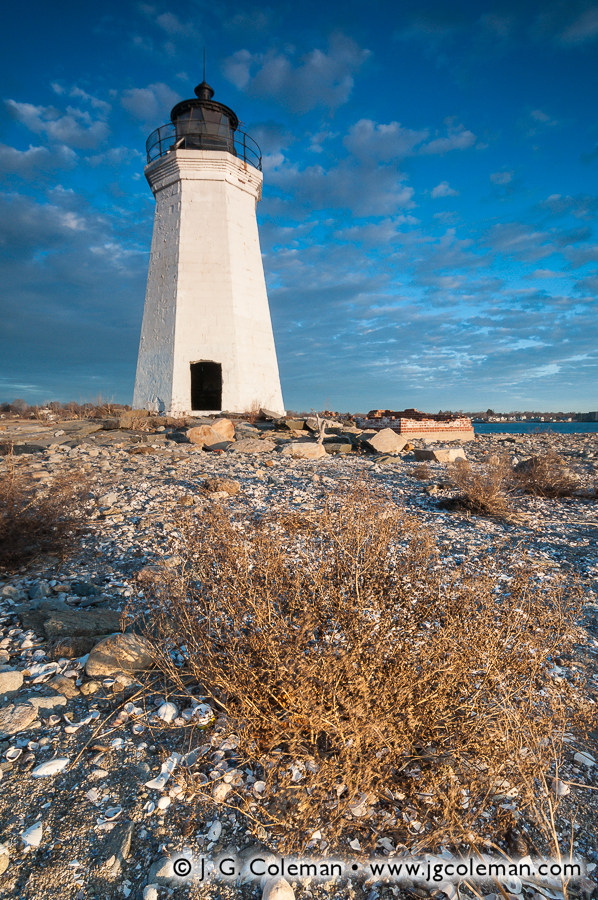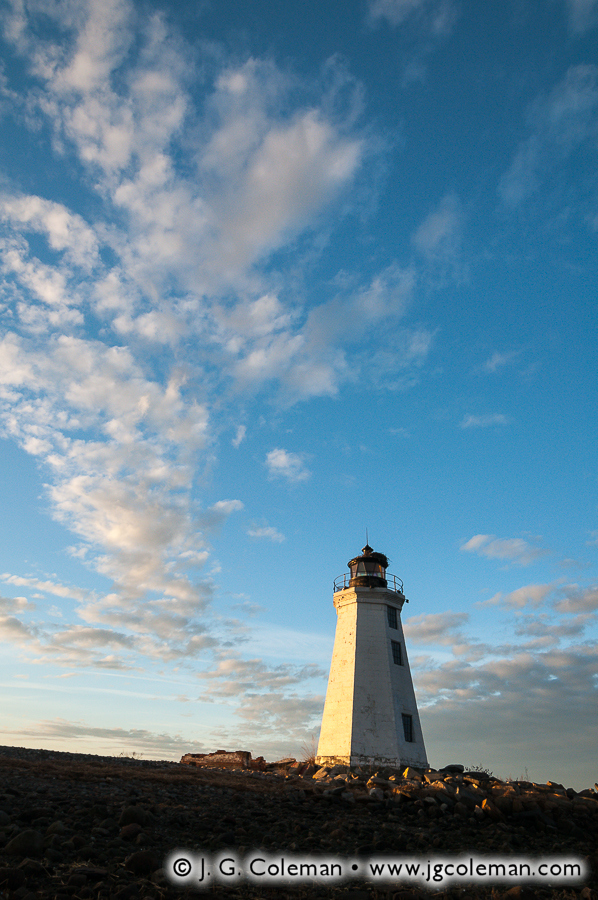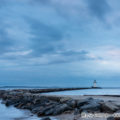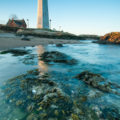
Black Rock Lighthouse on Fayerweather Island, Seaside Park, Bridgeport, Connecticut
© 2014 J. G. Coleman
For nearly 200 years, the Black Rock Lighthouse has been perched upon Fayerweather Island just off the coast of Bridgeport, Connecticut, weathering countless hurricanes, blizzards, floods and even the tireless efforts of several generations of vandals. Against all odds, the Black Rock Light continues to watch over Long Island Sound to this very day, an enduring reminder of a bygone era of Connecticut maritime heritage.
This iconic lighthouse of the Bridgeport coastline is featured in my new pieces, Fayerweather Daybreak (above) and Black Rock Crescendo (below), both of which feature the white hexagonal tower against the glorious light of dawn. Indeed, the Black Rock Light is quite a rare gem, especially when we consider that so much of the view of Bridgeport’s coastline in this area includes industrial buildings and factory smokestacks.

Black Rock Lighthouse on Fayerweather Island, Seaside Park, Bridgeport, Connecticut
© 2014 J. G. Coleman
It may be interesting to note that, even though the Black Rock Light is situated on Fayerweather Island, it is one of the few lighthouses left in Connecticut that is accessible by the public on foot. Most of Connecticut’s off-shore lighthouses were constructed upon islands that are relatively distant from the coast, but when the Black Rock Light was built upon Fayerweather Island in the earlier half the 19th-century, it was a mere 1000 feet from the mainland. In fact, folks could even walk to the island on a sandbar that would emerge during low-tide. By 1880s, the decision was made to build a large stone breakwater over the existing sandbar, permanently linking the island to the mainland even during high tide.
The new breakwater would surely have been appreciated by lighthouse keepers and maintenance crews who could now easily move back and forth between the island and mainland without the need for a boat. But in 1933, when the lighthouse was officially decommissioned and essentially left abandoned, the breakwater became an avenue for vandals that gutted and routinely defaced the structure while the ravages of time and environment took their toll. Mercifully, two efforts at restoration were eventually launched, one in the 1980s and the other in the 1990s, which succeeded at stabilizing and beautifying the decaying structure.
Unfortunately, even with the lighthouse now being part and parcel to Bridgeport’s Seaside Park, vandalism remains an on-going issue. During the shoot that I produced Fayerweather Daybreak and Black Rock Crescendo, for example, I found the walls of the lighthouse scribbled with all manner of graffiti which I decided to painstakingly edit out of my final images. The result is that the lighthouse you see in these works is a bit idealized, at least in the sense that it is shown in the context of world where folks might be inclined to respect this old sentinel of Black Rock Harbor rather using it as a personal billboard.
Luckily, if spray paint is the only problem that the Black Rock Light needs to contend with, it’s likely to fare exceptionally well. Upon its completion in 1823, the builders of the Black Rock Light claimed that it had been constructed to “withstand the storm of ages”… so far, it’s done exactly that.
Want to See More?
- To buy a fine art print of the pieces seen above, or to see other works from this location, visit the Seaside Park section of my online galleries.
As part of J. G. Coleman’s Decor Series prints, all of the works seen here are available at Fine Art America. You are encouraged to visit his J. G. Coleman’s Fine Art America eStore, or see all of Fine Art America’s connecticut art.





